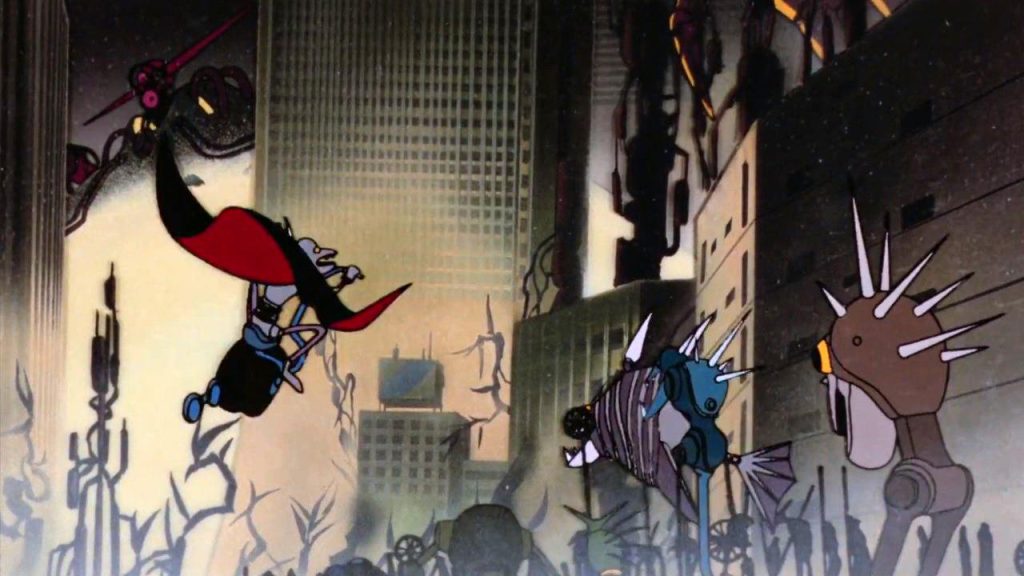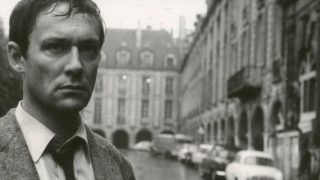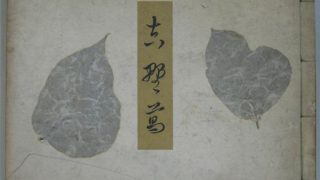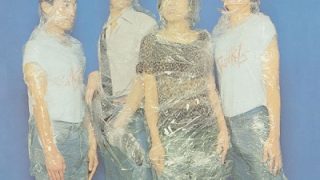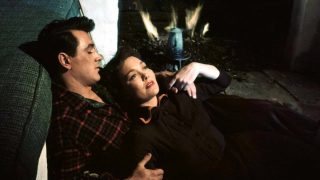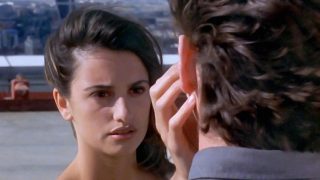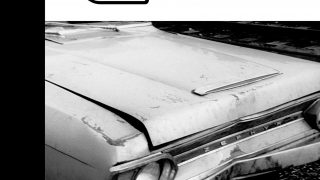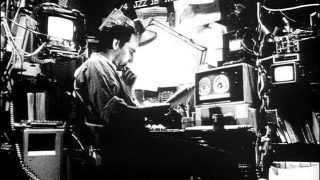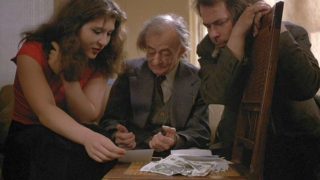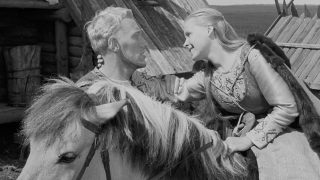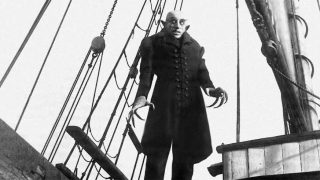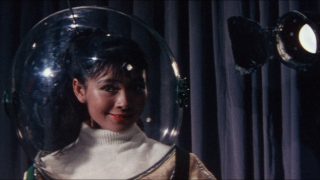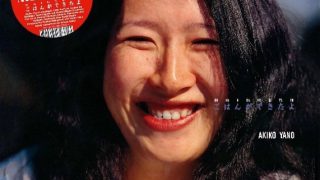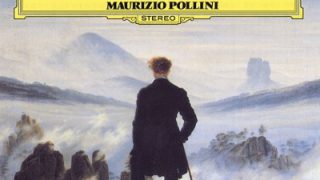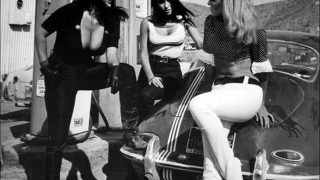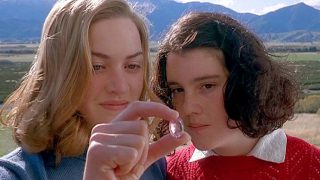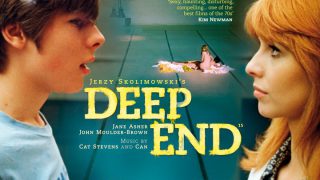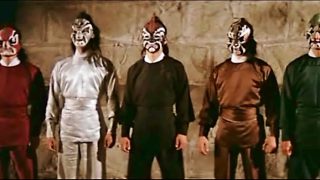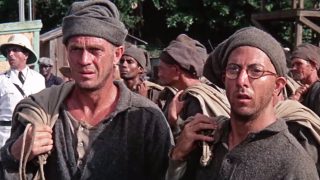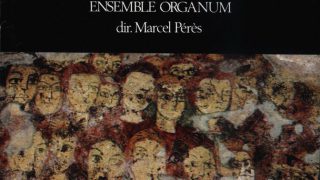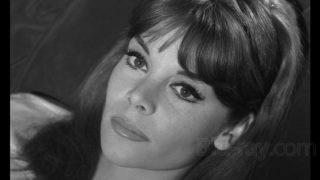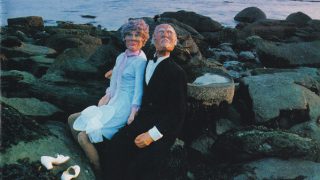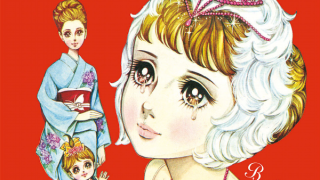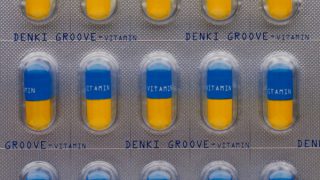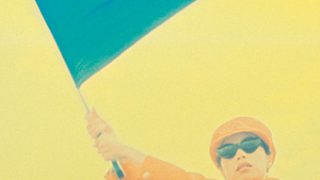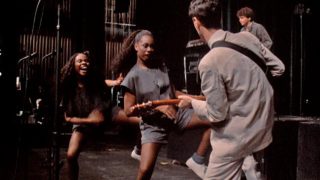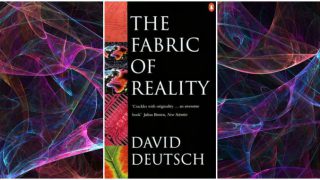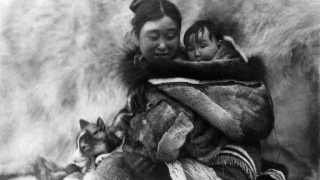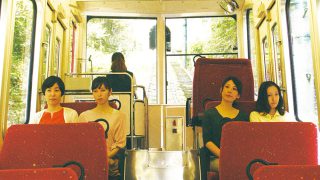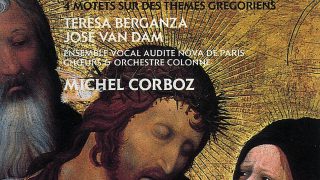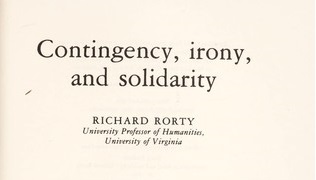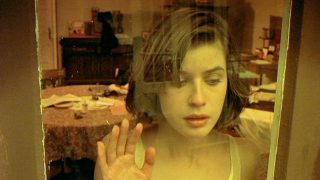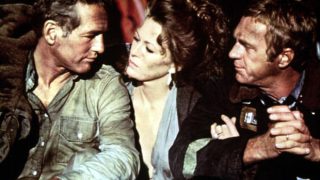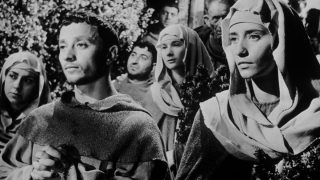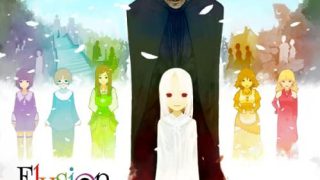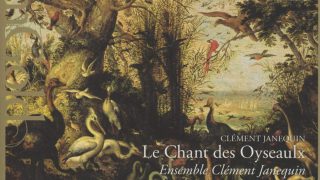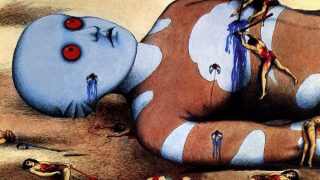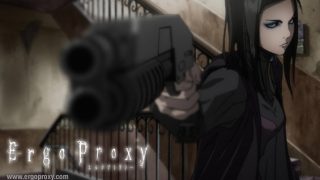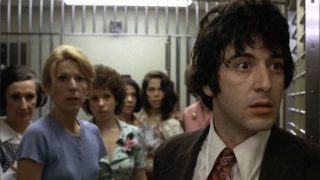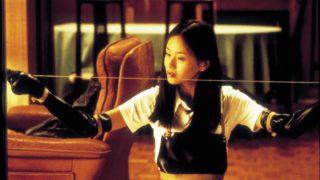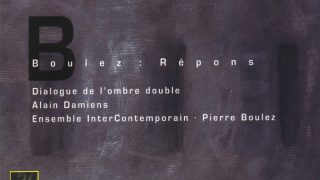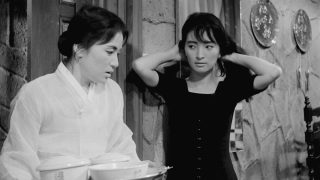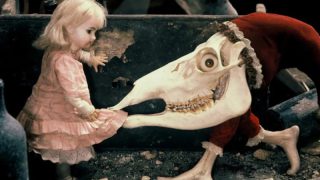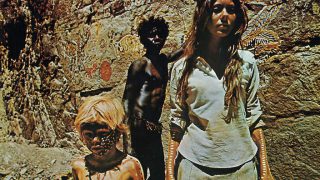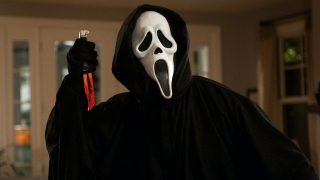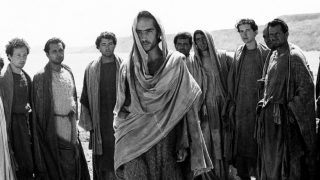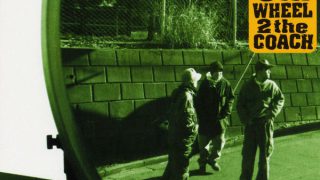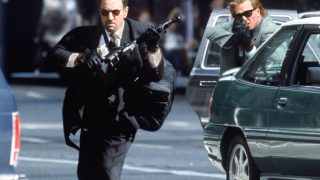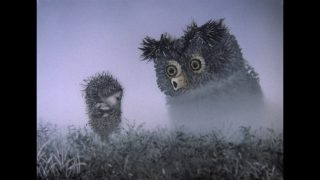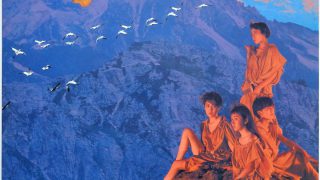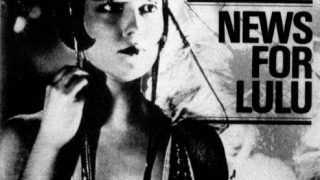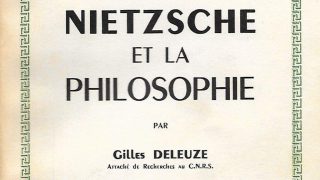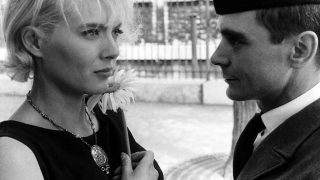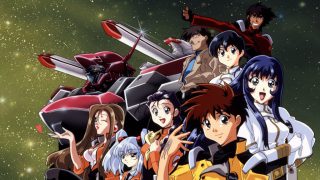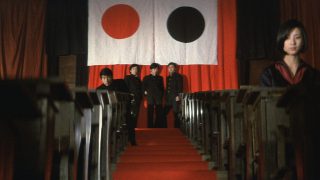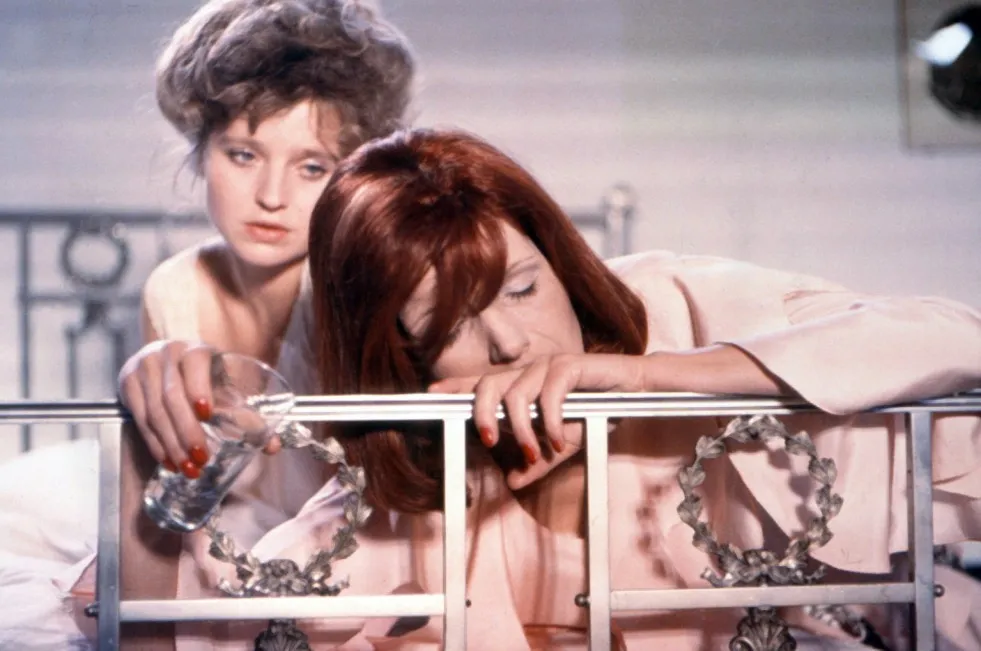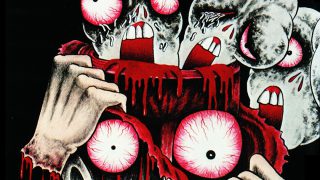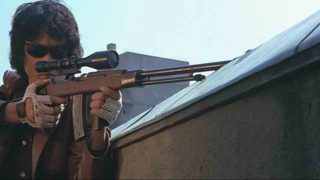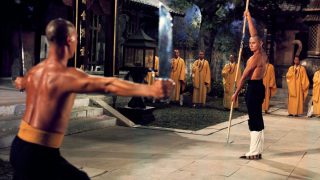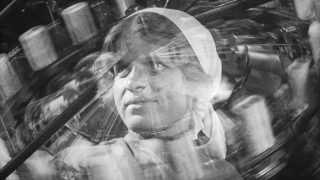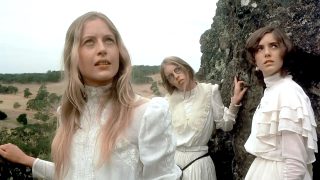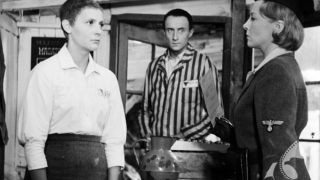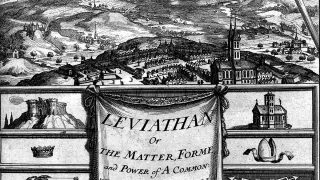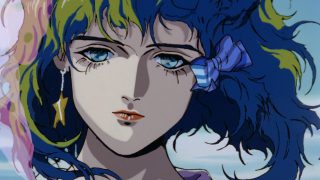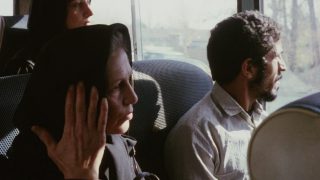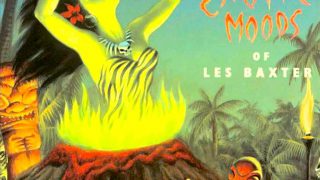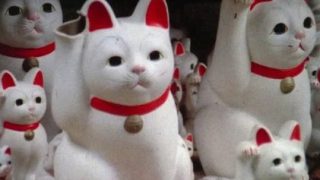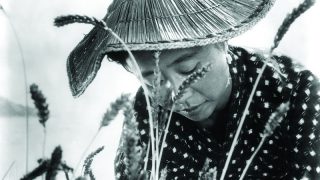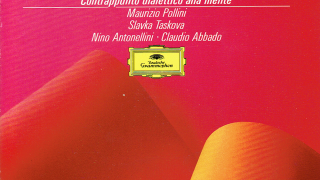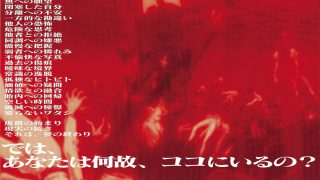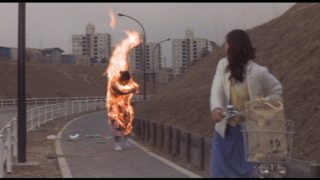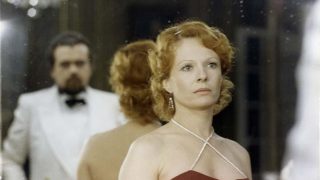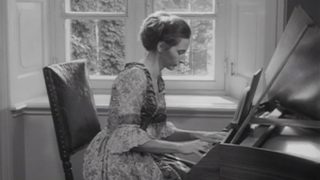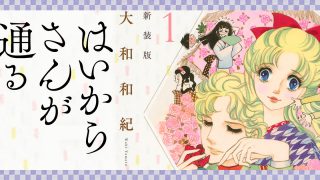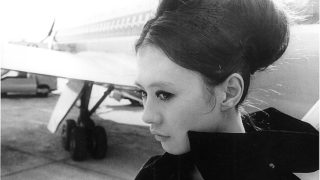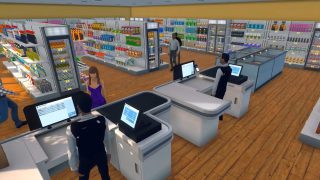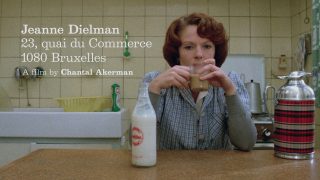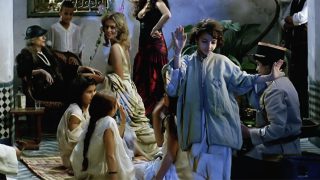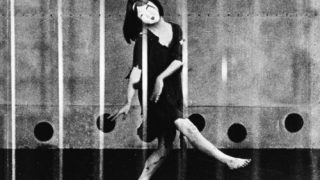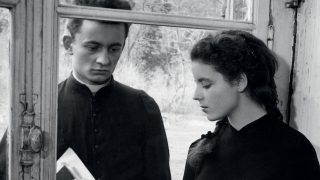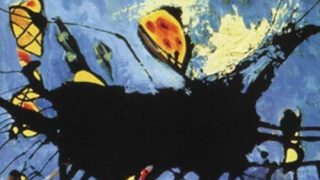Overview
“Robot Carnival” is a Japanese OVA (original video animation) produced by A.P.P.P. and released in 1987. It contains short animation films produced by eight animators and manga artist Katsuhiro Otomo with the common theme of “robot” in omnibus format. It consists of seven shorts sandwiched between “Opening” and “Ending”. 90 minutes.
It is one of the masterpieces in the early days of OVA in Japan in the 1980s. It is characterized by its wide variety of styles, ranging from entertaining to artistic ones, and the gorgeous images of elaborate animations.
Though it was not a big seller at the time of its release in Japan, it has been highly regarded as an artistic film by anime enthusiasts in and out of Japan.
Discotek Media (the U.S.) released the 4K restoration of “Robot Carnival” on Ultra HD Blu-ray in 2021.
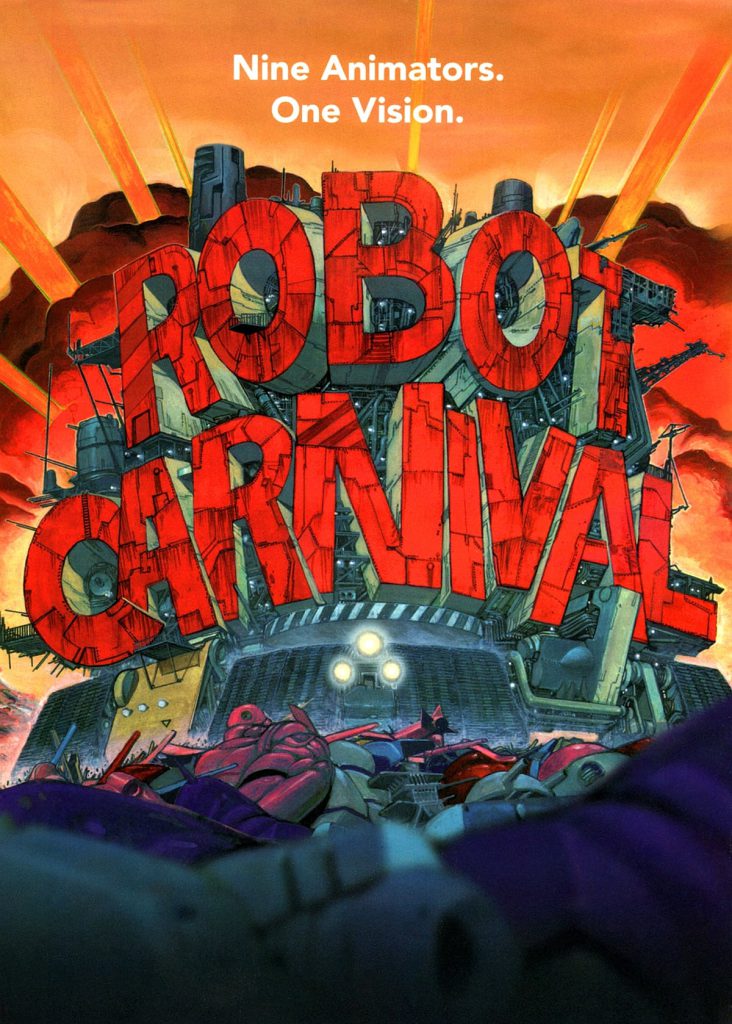
Opening / Ending
- Director / Scenario / Storyboards: Katsuhiro Otomo
- Character Designer/ Key Animator: Atsuko Fukushima
- Backgrounds: Nizō Yamamoto
“Opening” is a surreal black comedy film, in which a huge machine like a moving fortress comes to a desert, carrying many doll-like robots and the logo “ROBOT CARNIVAL”, and it runs through the desert, attacking the village people and trampling their residences.
“Ending” is a sequel to “Opening”.
Otomo entrusted almost all the production works to Fukushima and Yamamoto after he drew up the storyboards because he had begun preparations for his animated film “Akira” (1988) at that time.
The Otomo-esque character design and realistic, dynamic drawings by Fukushima are worth seeing.
Before producing the film, Fukushima had done layout design and key animation for the anime film “Grimm Douwa: Kin no Tori (Grimm’s Fairy Tale: The Golden Bird)” (1987) and character design/animation direction/key animation for “Labyrinth Labyrinthos” of the omnibus anime film “Manie Manie (Neo Tokyo)” (1987).
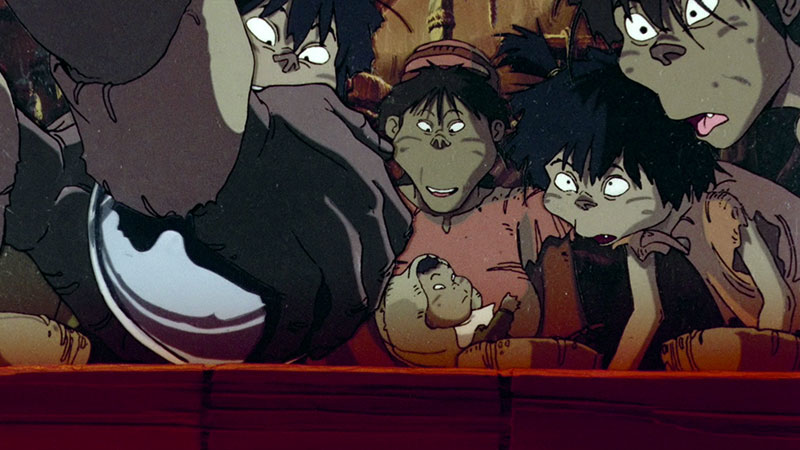
Franken’s Gears
- Director / Scenario / Character Designer: Koji Morimoto
- Backgrounds: Yūji Ikehata
In a laboratory, an old mad scientist tries to activate his robot by giving life to it, and the robot stands up slowly.
“Franken’s Gears” is a retro styled steampunk science fiction film. It was influenced by German expressionist films, such as Robert Wiene’s “The Cabinet of Dr. Caligari” (1920), and Fritz Lang’s “Metropolis” (1927).
At that time, Morimoto was known for his tricky drawing style, as represented by his key animations for such anime films as “Harmagedon” (1983) and “The Dagger of Kamui” (1985).
The film is characterized by its detailed description and smooth animation influenced by Katsuhiro Otomo and Takashi Nakamura.
The dynamic motions of the things, such as the old man’s overaction, the robot shaking and standing up, mechanical parts dancing in the air, are depicted in minute detail.
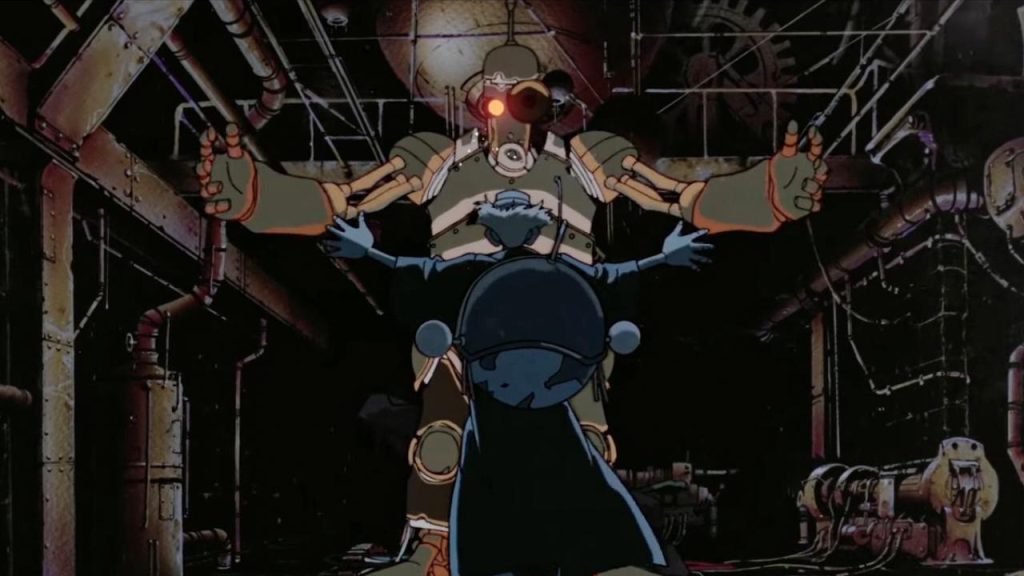
Deprive
- Director / Scenario / Character Designer: Hidetoshi Ōmori
- Backgrounds: Kenji Matsumoto
A young girl is captured by alien invaders. To recapture the girl, a worker android converts himself into a combat humanoid and fights against the enemy.
“Deprive” is an action anime film based on the respect for hero action anime series produced by Tatsunoko Productions, such as “Casshan” (1973–1974) and “Hurricane Polymar” (1974–1975).
At that time, Ōmori was known as one of the animation directors for the robot anime series produced by Sunrise, such as “Aura Battler Dunbine” (1983–1984) and “Heavy Metal L-Gaim” (1984–1985).
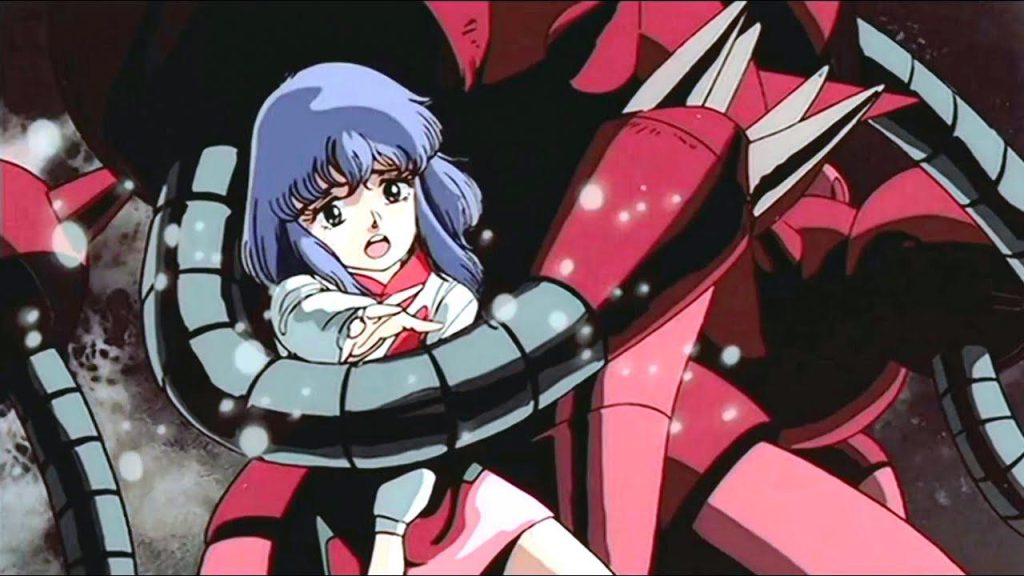
Presence
- Director / Scenario / Character Designer: Yasuomi Umetsu
- Animation Production Assistance: Shinsuke Terasawa, Hideki Nimura
- Backgrounds: Hikaru Yamakawa
Set in a world where humanoid robots live with humans.
A man lives with his wife and daughter in a European country like Britain.
He expected femininity from his wife because he had grown up without knowing motherly love, but she didn’t live up to his expectations because she was a mannish career woman.
He is hiding a girl-type gynoid (feminine humanoid robot) he secretly constructed in a shed in the woods to satisfy his desire for femininity.
The gynoid takes on a personality of her own. He smashes the gynoid and leaves her in the shed.
Decades later, when he becomes an old man, the gynoid appears again before the man.
“Presence” is characterized by its artistic and beautiful images including extremely detailed drawings and realistic expressions. It also seems like a film that challenged the limits of hand-drawn animation technique at that time.
At that time, Umetsu was known for his realistic and detailed drawings, as represented by the opening of the TV anime series “Mobile Suit Zeta Gundam” (1985–1986) and character design for the OVA “Megazone 23 – Part II” (1986).
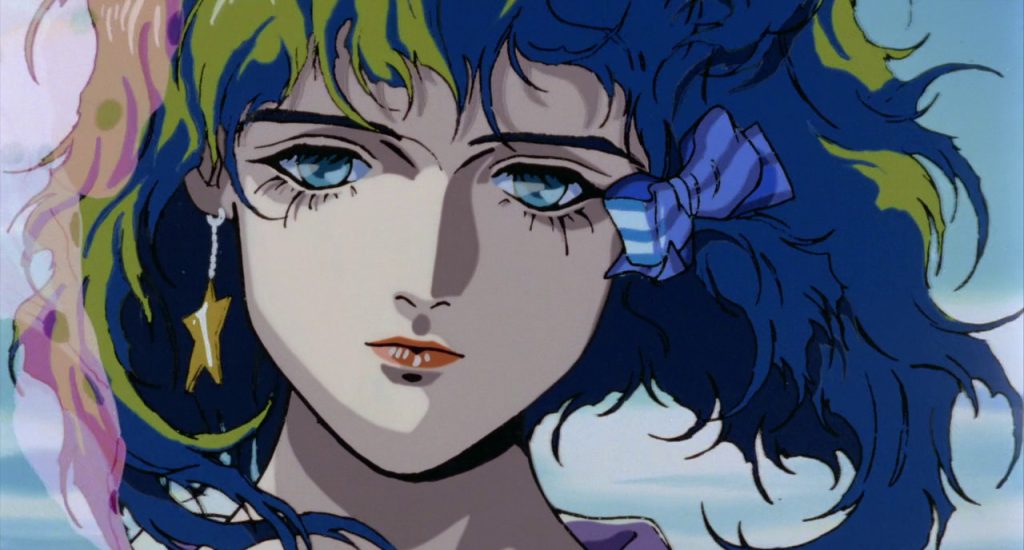
Star Light Angel
- Director / Scenario / Character Designer: Hiroyuki Kitazume
- Backgrounds: Yui Shimazaki
A teenage girl visits a robot-themed amusement park with her female friend. The friend introduces her boyfriend to the girl, but he is the man who gave a necklace to the girl and kissed her.
The girl runs away in tears. She enters into a dream world, where she meets a young man who worked in the park, wearing the costume of a robot.
He fights against evil robots, wearing a robotic suit like an armored knight, and the girl gets over the shock thanks to him.
“Star Light Angel” is a fairy-tale-like fantasy film that depicts an adolescent girl’s imagined scenery. It is a film like a music video, such as A-ha’s “Take On Me” (1984).
At that time, Kitazume had worked as the character designer for the TV anime series “Mobile Suit Gundam ZZ” (1986–1987) after working as an animation director for “Mobile Suit Zeta Gundam”.
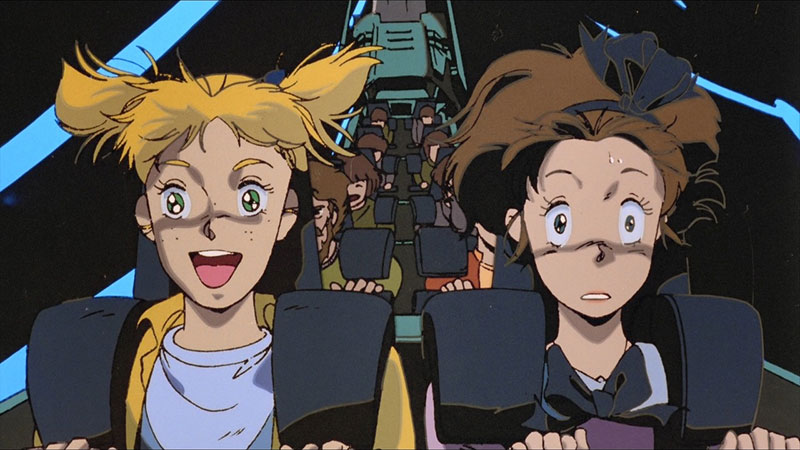
Cloud
- Director / Scenario / Character Designer: Mao Lamdo (an alias of animator Manabu Ōhashi)
- Key Animation: Manabu Ōhashi
- Animation: Hatsune Ōhashi, Shiho Ōhashi
- Backgrounds: Mao Lamdo
A boy in the shape of a robot keeps on walking with his head down. Behind the boy, clouds metamorphose into a variety of things: angels, storm, explosion, and a mushroom cloud.
“Cloud” is an art film based on the picture book “Kumo to Shōnen (Clouds and A Boy)” which Manabu Ōhashi self-published in 1979.
It depicts the imagined scenery of a robot boy as a cinepoetry. The animation is drawn in a scratchboard or etching style.
At that time, Ōhashi was known for his works such as the opening/ending of the TV anime series “Treasure Island” (1978–1979), animation direction for the anime film “Bobby’s Girl” (1985), and character design/animation direction for the anime film “Grimm Douwa: Kin no Tori (Grimm’s Fairy Tale: The Golden Bird)” (1987).

Strange Tales of Meiji Machine Culture: Westerner’s Invasion
- Director / Scenario: Hiroyuki Kitakubo
- Character Designer: Yoshiyuki Sadamoto
- Mechanical Designer: Mahiro Maeda
- Animation Assistance: Kazuaki Mōri, Yuji Moriyama, Kumiko Kawana
- Backgrounds: Hiroshi Sasaki
Set in Japan in the early Meiji period (19th century).
An English-speaking mad scientist, John Jack Volkerson III operates his giant robot “My Dear Tinker Bell” and attacks Edo (the former name of Tokyo) to take over Japan.
A young man named Sankichi and his four friends operate a giant humanoid robot (a mechanical palanquin) “Steamer Benkei”, which was made for the harbor festival, and fight against Volkerson III.
“Strange Tales of Meiji Machine Culture: Westerner’s Invasion” is a comical and entertaining steampunk science fiction film that depicts the battle between the two giant robots.
Before producing the film, Kitakubo had made his directorial debut with “Pop Chaser” (1985), the fourth of the X-rated OVA series “Cream Lemon” (1984–1987).
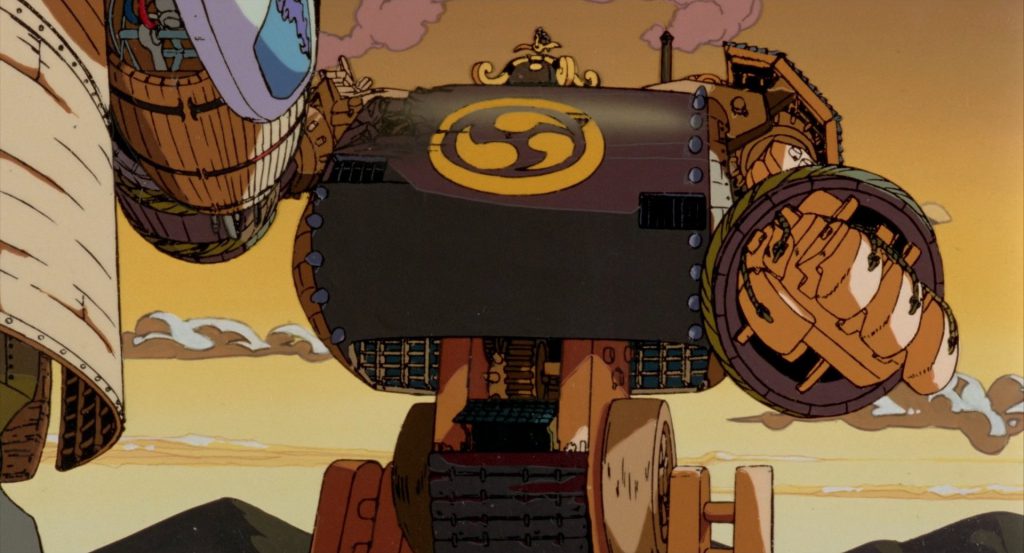
Chicken Man and Red Neck
- Director / Scenario / Character Designer: Takashi Nakamura
- Backgrounds: Hiroshige Sawai
In Shinjuku, Tokyo at midnight, machines are turned into robotic monsters by a robot like a magician (Chicken Man), and a feast of robotic monsters begins.
A drunken man witnesses it, and he is hounded by Chicken Man.
“Chicken Man and Red Neck” is a dark fantasy film like a nightmare, in which Takashi Nakamura pursued the flowing movement of the characters under the influence of Walt Disney and Fleischer Studios.
At that time, Nakamura was known for his works such as key animation for “Harmagedon”, and character design for the TV anime series “Mirai Keisatsu Urashiman (Future Policeman Urashiman)” (1983).
